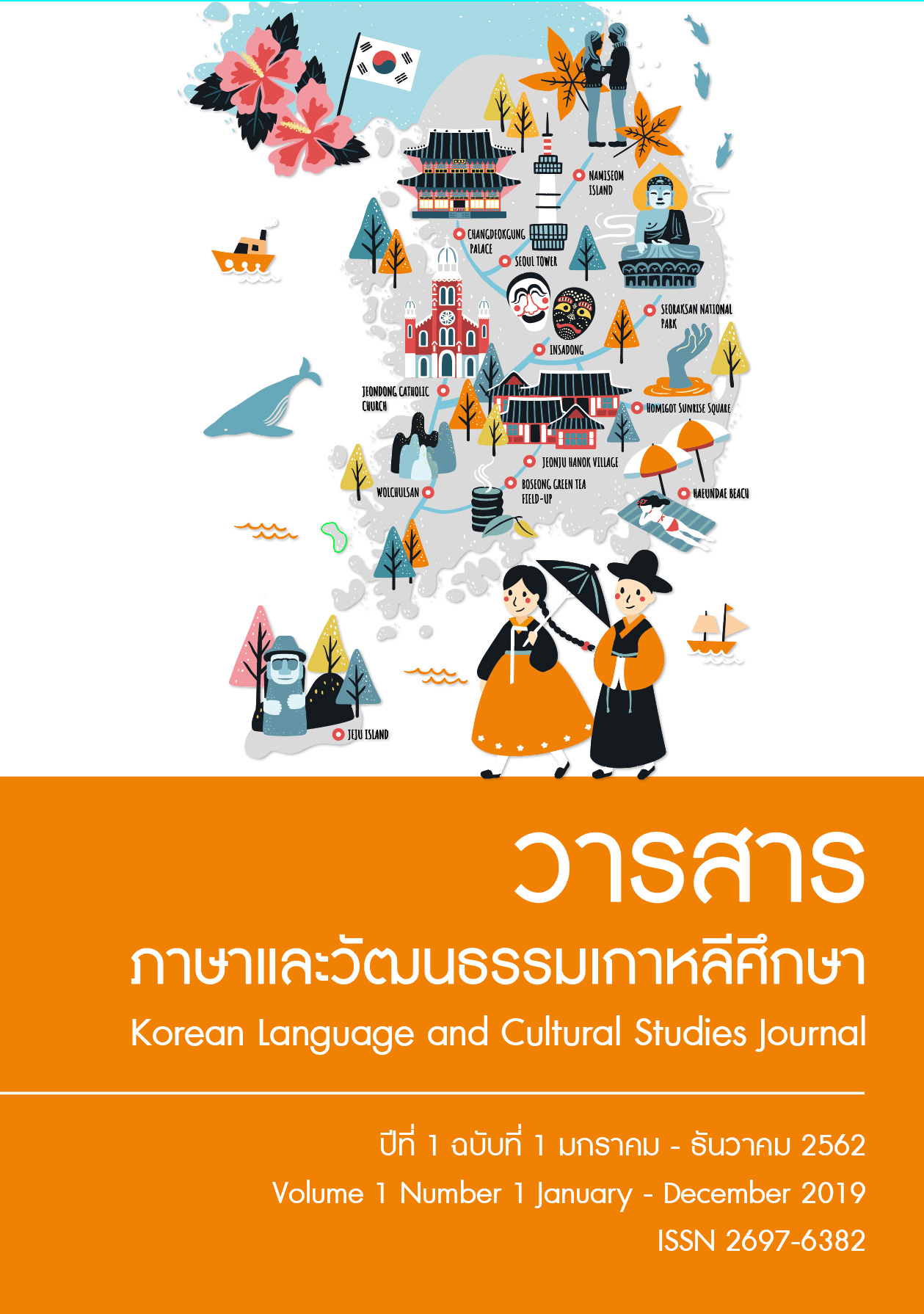A study on the Integrated reading and writing teaching method for KFL(Korean as a Foreign Language) Learners
Main Article Content
Abstract
The purpose of this study is to discuss the Integrated reading and writing method in Korean language education and develop an applicable ‘model of instruction for Korean language reading and writing classes’ in universities of Thailand. This study would propose ways to improve learners’ communication ability by the medium of written language through the integrated reading and writing teaching method Reading expedites the ability of writing and writing boosts the reading ability. They seem completely different but are connected since both are the acts of communication via written language and the complex thought processes that reconstitute the meaning. Also, it can also be said that they are related to each other in terms of expressing ideas through textual language.
Reading materials become the basis of the writer’s imagination and develop into the model. Learners get used to the structure and expression of Korean language through active reading activities and rev up writing activities. Therefore, the learners have a lesser burden when asked to write with these reading materials.
Thus, the learning effect may be maximized by the reading activity based on writing. In the Integrated reading and writing teaching method, learners who read the reading materials of the goal language on the premise of writing, tend to employ more critical thinking than the learners who focused on reading solely.
The researcher assigned new appropriate writing activities to the learners on the basis of this study since the writing tasks given by the textbook were inadequate. Based on careful examination of the effects, this study proposes ‘A model of instruction for the Integrated reading and writing teaching method for KFL(Korean as a Foreign Language) Learners.
Article Details
References
설명문을 중심으로. 이화여자대학교 석사학위논문.
김연희. (2004). CIRC 프로그램을 활용한 글쓰기 지도 방법 연구. 서울교육대 교육대학원 석사학위논문.
김정숙. (2007). 읽기 쓰기 활동을 통합한 학술 보고서 쓰기 지도 방안. 이중언어학, 33, 35-54.
김형근. (2002). 외국어로서의 한국어 읽기와 쓰기 교수 학습에 관한 통합적 연구, 국민대 교육대학원 석사학위논문.
손은영. (2006). 읽기 쓰기 통합지도를 통한 읽기 능력 신장 방안 연구, 홍익대학교 교육대학원 석사학위논문.
신헌재 외. (2003). 국어과 교육에서의 통합의 범위와 방식. 교수논총, 13(1), 49-6.
안기정. (2018). 비판적 담화 분석에 기초한 비판적 읽기-쓰기 통합 활동 실행 연구: 한국어 중급 대상자들을 중심으로. 외국어교육연구, 32(4), 271-294.
이경화. (1996). 전략 중심 읽기 수업 모형의 비판적 고찰, 국어교육. 한국국어교육 연구회, 91, 85-108.
이성희. (2008). 한국어 교육에서의 읽기 쓰기 통합 교육 연구. 이중언어학회, 37, 113-130.
장기형. (2003). 협동적 읽기 쓰기 통합 프로그램이 아동의 읽기 능력에 미치는 효과. 한국교원대학교 교육대학원 석사학위논문.
정문성. (2008). 협동학습의 이해와 실천. 교육과학사.
조영철. (2011). CIRC 프로그램을 활용한 한국어 읽기 쓰기 통합 교육 방안 연구. 한국외국어 대학교 교육대학원 석사학위논문.
천경록. (1995). 도해 조직자 지도가 독해에 미치는 효과. 국어교육, 89, 199-218.
허용 외. (2005). 외국어로서의 한국어 교육학 개론. 도서출판 박이정.
Fairclough, N. (2004). 대중매체 담화 분석(이원표 역). 서울: 한국문화사.
Gee, J. P., & Handford, M. (2012). The Routledge handbook of discourse analysis. Oxfordshire: Routledge.


